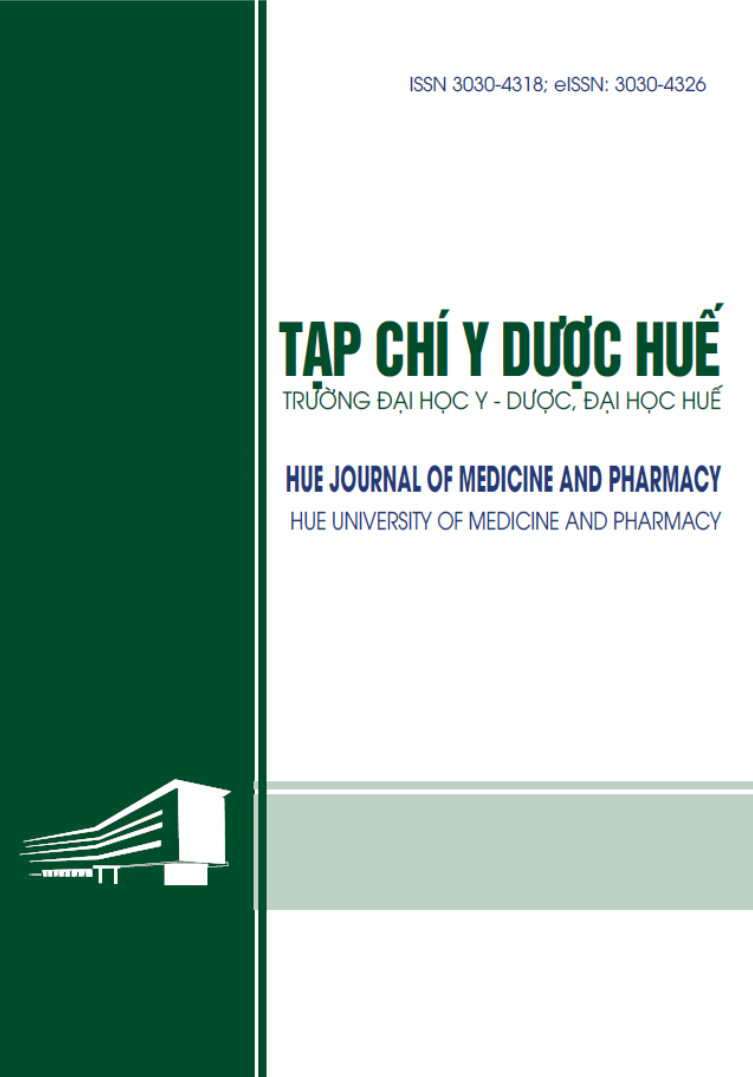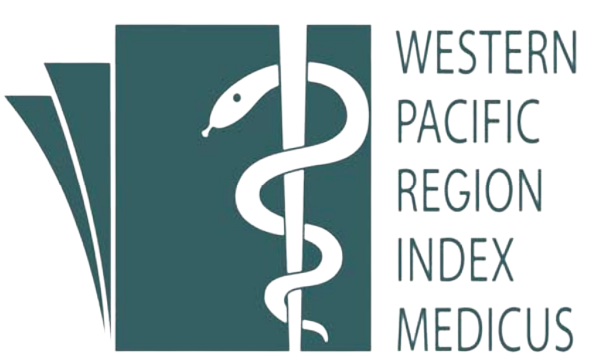Tóm tắt
Đặt vấn đề và mục tiêu: Chi Goniothalamus là một trong những chi quan trọng của họ Na (Annonaceae). Trong số các loài thuộc chi Goniothalamus, các nghiên cứu về loài Giác đế miên (Goniothalamus tamirensis) còn hạn chế. Nghiên cứu này mô tả đặc điểm vi phẫu, soi bột, định tính sự có mặt của các nhóm hợp chất hữu cơ có trong thân, lá Giác đế miên và đánh giá hoạt tính kháng viêm in vitro của cao chiết thân và lá loài Giác đế miên. Đối tượng và phương pháp nghiên cứu: Loài Giác đế miên (Goniothalamus tamirensis) được thu hái tại Phong Điền, Thừa Thiên Huế vào tháng 8 năm 2024. Nghiên cứu đặc điểm vi học bằng phương pháp hiển vi. Chiết xuất bằng phương pháp Soxhlet với dung môi methanol. Định tính bằng các phản ứng hoá học đặc trưng. Đánh giá hoạt tính kháng viêm in vitro bằng mô hình ức chế sản sinh NO. Kết quả: đã mô tả chi tiết đặc điểm vi phẫu, các đặc điểm bột thân và lá Giác đế miên. Thành phần hóa học của lá và thân Giác đế miên đều có alkaloid, chất béo, steroid, acid hữu cơ và đường khử. Cao chiết lá và thân Giác đế miên thể hiện khả năng kháng viêm thông qua ức chế sản sinh NO với giá trị IC50 lần lượt là 13,24 và 12,65 µg/mL. Kết luận: kết quả nghiên cứu là công bố đầu tiên về đặc điểm thực vật và hoạt tính kháng viêm của cao chiết methanol thân và lá Giác đế miên
| Đã xuất bản | 25-06-2025 | |
| Toàn văn |
|
|
| Ngôn ngữ |
|
|
| Số tạp chí | Tập 15 Số 3 (2025) | |
| Phân mục | Nghiên cứu | |
| DOI | 10.34071/jmp.2025.3.26 | |
| Từ khóa | Giác đế miên, đặc điểm thực vật, hoạt tính kháng viêm in vitro Goniothalamus tamirensis, anatomical characteristics, anti inflammatory in vitro |

công trình này được cấp phép theo Creative Commons Attribution-phi thương mại-NoDerivatives 4.0 License International .
Bản quyền (c) 2025 Tạp chí Y Dược Huế
Leboeuf M, Cavé A, Bhaumik PK, Mukherjee B, Mukherjee R. The phytochemistry of the annonaceae. Phytochemistry [Internet]. 1980 Jan 1 [cited 2024 Oct 30];21(12):2783–813. Available from: https://www.sciencedirect.com/science/article/pii/0031942280850461
Lan YH, Chang FR, Liaw CC, Wu CC, Chiang MY, Wu YC. Digoniodiol, Deoxygoniopypyrone A, and Goniofupyrone A: Three New Styryllactones from Goniothalamus amuyon. Planta Med [Internet]. 2005 Feb 24 [cited 2024 Oct 31];71:153–9. Available from: https://www.thieme-connect.com/products/ejournals/abstract/10.1055/s-2005-837783
Zakaria ZB. Isolation and characterization of Styryllactone of Goniothalamus ridleyi. Sains Malays [Internet]. 2015 [cited 2024 Oct 31];44(3):365–70. Available from: https://www.academia.edu/36058082/Isolation_and_Characterization_of_Styryllactone_of_Goniothalamus_ridleyi
Abdullah NN, Afzan A, Jelas NH, Mohd Abd Razak MR, Rasol NE, Bakar SIA, Bihud NV, Wai LK, Zainol M, Ahmad FB, Cordell GA, Ismail NH. Styryllactones in the leaves of Goniothalamus lanceolatus Miq., molecular networking and their anti-dengue activity In vitro and in silico. Phytochem Lett [Internet]. 2024 Apr 1 [cited 2024 Oct 31];60:134–42. Available from: https://www.sciencedirect.com/science/article/pii/S1874390024000119
Enders D, Barbion J. Asymmetric synthesis of (+)-altholactone: a styryllactone isolated from various Goniothalamus species. Chem Weinh Bergstr Ger. 2008;14(9):2842–9.
Tip-pyang S, Limpipatwattana Y, Khumkratok S, Siripong P, Sichaem J. A new cytotoxic 1-azaanthraquinone from the stems of Goniothalamus laoticus. Fitoterapia. 2010 Oct;81(7):894–6.
Tantithanaporn S, Wattanapiromsakul C, Itharat A, Keawpradub N. Cytotoxic activity of acetogenins and styryl lactones isolated from Goniothalamus undulatus Ridl. root extracts against a lung cancer cell line (COR-L23). Phytomedicine Int J Phytother Phytopharm. 2011 Apr 15;18(6):486–90.
Wiart C. Goniothalamus species: a source of drugs for the treatment of cancers and bacterial infections? Evid-Based Complement Altern Med ECAM. 2007 Sep;4(3):299–311.
Meesakul P, Jaidee W, Richardson C, Andersen RJ, Patrick BO, Willis AC, Muanprasat C, Wang J, Lei X, Hadsadee S, Jungsuttiwong S, Pyne SG, Laphookhieo S. Styryllactones from Goniothalamus tamirensis. Phytochemistry [Internet]. 2020 Mar [cited 2024 Oct 30];171:112248. Available from: https://linkinghub.elsevier.com/retrieve/pii/S0031942219307915
Tran DT, Mai HDT, Pham VC, Nguyen VH, Litaudon M, Guéritte F, Nguyen QV, Tran TA, Chau VM. Alkaloids and styryllactones from the leaves of Goniothalamus tamirensis. Phytochem Lett [Internet]. 2013 Feb 1 [cited 2024 Oct 30];6(1):79–83. Available from: https://www.sciencedirect.com/science/article/pii/S1874390012001966
Tai BH, Huyen VT, Huong TT, Nhiem NX, Choi EM, Kim JA, Long PQ, Cuong NM, Kim YH. New pyrano-pyrone from Goniothalamus tamirensis enhances the proliferation and differentiation of osteoblastic MC3T3-E1 cells. Chem Pharm Bull (Tokyo). 2010 Apr;58(4):521–5.
Nguyễn Thị Hoài, Nguyễn Khánh Thùy Linh, Nguyễn Đình Quỳnh Phú. Giáo trình thực hành Dược liệu học. 2019.
Joo T, Sowndhararajan K, Hong S, Lee J, Park SY, Kim S, Jhoo JW. Inhibition of nitric oxide production in LPS-stimulated RAW 264.7 cells by stem bark of Ulmus pumila L. Saudi J Biol Sci. 2014 Nov;21(5):427–35.
Cao Ngọc Giang, Ngô Thị Minh Huyền, Nguyễn Minh Hùng, Lê Đức Thanh, Nguyễn Xuân Trường, Lê Văn Khanh, Lê Văn Sơn, Trần Đình Tuấn, Đoàn Thị Thanh Nhàn, Trần Thị Liên. Kết quả nghiên cứu một số đặc điểm thực vật học của nguồn gen cây thuốc Giác đế Sài Gòn (Goniothalamus gabriacianus (baill). Ast). Tạp Chí Dược Học Cổ Truyền Quân Sự. 2022;1:60–9.
Lekphrom R, Kanokmedhakul S, Kanokmedhakul K. Bioactive styryllactones and alkaloid from flowers of Goniothalamus laoticus. J Ethnopharmacol. 2009 Aug 17;125(1):47–50.
Polbuppha I, Teerapongpisan P, Phukhatmuen P, Suthiphasilp V, Maneerat T, Charoensup R, Andersen RJ, Laphookhieo S. Alkaloids and Styryl lactones from Goniothalamus ridleyi King and their α-Glucosidase inhibitory activity. Molecules [Internet]. 2023 Jan 24 [cited 2024 Nov 8];28(3):1158. Available from: https://pmc.ncbi.nlm.nih.gov/articles/PMC9918889/
Jiang MM, Zhang X, Dai Y, Gao H, Liu HW, Wang NL, Ye WC, Yao XS. Alkaloids from the root barks of Goniothalamus cheliensis. Chin Chem Lett [Internet]. 2008 Mar 1 [cited 2024 Nov 8];19(3):302–4. Available from: https://www.sciencedirect.com/science/article/pii/S1001841708000089
Zakaria MB, Saito I, Matsuura T. Aporphine Alkaloids from Goniothalamus Species. Int J Crude Drug Res [Internet]. 1989 Jan 1 [cited 2024 Nov 8]; Available from: https://www.tandfonline.com/doi/abs/10.3109/13880208909053943
Nathan C. Nitric oxide as a secretory product of mammalian cells. FASEB J Off Publ Fed Am Soc Exp Biol. 1992 Sep;6(12):3051–64.






